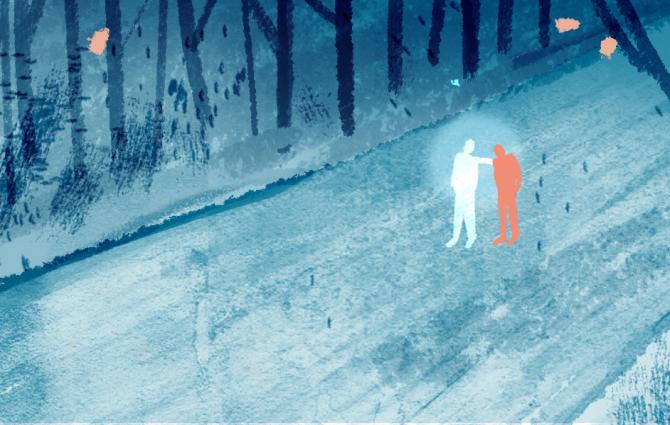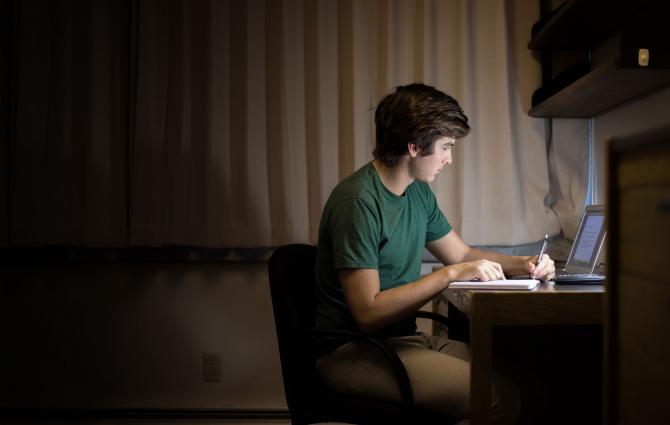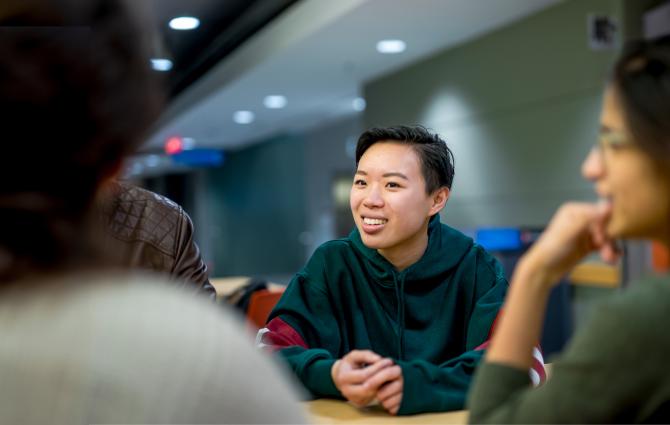Science & Tech for Change, the finale to the UBC Changemaking Series hosted by the Centre for Community Engaged Learning, showcased the interconnectivity of creativity, engagement, and education.
Walking around the engagement booths in the Centre for Interactive Research on Sustainability (CIRS), I observed a simple fact: passionate, creative proponents for change can be found just a few footsteps away—they are right here in this community, from UBC Blockchain Club to UBC Climate Hub, from Friends of Médecins Sans Frontières to Roots on the Roof.
At one stand, I saw how entropy could be modelled in real life, beyond my chem notes, through a simple exercise designed for kids—I rolled 2 dice, got the sum, and played around with the microstates. At another stand, I saw how coding could be worked into lesson plans for everyone, regardless of ability.
I brought home from the event a stack of pamphlets, a flashlight, and (gasp!) a free copy of The Cell: A Molecular Approach (I’m going in a biochem direction, after all).
But, above all, forever fascinated with keeping notes, I took away 3 inspirational quotes reflective of the building blocks of a sustainable world.
Creativity
“Really, the sky’s the limit.”
That was what Tom from Urban Repurpose, a non-profit organization, pointed out to me when I dropped by his booth. What drew me there in the first place was the tall, imposing piece of furniture he had on display, a product his team made from salvaged materials.
Turns out that it was a storage cabinet—recycled and reassembled from a deconstructed 6-foot oak desk that would have been demoted to mere waste. Tom walked me through the process: the desk was halved, stacked one on the other, and laminated, with the top cut off to form a lid.
Urban Repurpose, Tom explained, collects consumer products from demolished homes and donations made by owners, revolutionizes them, and sells them at low costs to reap funds.
Consumer products, mostly furniture and household items, are given longer life cycles and new functions. Unwanted windows become art media and greenhouse products. Boots transform into planters. Pianos turn into harvested lumber and parts.
I was reminded that, despite the modern planned obsolescence of consumer products, initiatives can be taken to make something purposeful and unique out of what would have otherwise been...nothing.
The team of volunteers is constantly challenged to imagine creative alternate uses for discarded material, without burning or burying, and is encouraged to experiment. “It’s up to the individual’s creativity,” Tom said when I asked him how they came up with ideas.
This year, they will focus on educating the public about waste diversion and leading by example. If you’re interested in volunteering, or donating products to them, first check out what they’re up to via their Instagram page.
Engagement
“Stop and dig into understanding the world around you.”
These words from Marika, the representative of the Environmental Youth Alliance (EYA), jolted me awake. How often have I revolved about my own orbit, walking head down, disengaged from how much there is to know about nature?
At the stand, I played a game. Given 9 specimens in a display case, I had to identify which ones were the bees. No only did I only manage to name 2 species of bees, but I also confused bees with flies. Well!
“Why do you think a fly would want to mimic a bee?” Marika peered at me.
My mind blanked, and a most incorrect answer wedged out of my mouth.
“Uh...um...camouflage! Wait, no. What’s that term called? Okay, I can’t remember, so, um, to pretend it has a stinger?”
Marika, to her credit, said, “Yes! You’re on point! It’s because flies don’t have stingers—”
“On point,” I chuckled. “Man, that’s a pun.”
Marika apparently didn’t realize it herself, and started laughing. “I didn’t even—that’s the thing about working with bees, like, endless puns.”
Just like these conversations that take a sudden turn to the unexpected (but amazing!), nature itself can be filled with aspects and moments that make us pause, laugh, and find beauty in serendipity.
Marika reminded me that the city is itself biodiverse, and that, therefore, there is a high need to restore habitats. The team at EYA (ages 14–25) work in a native plant nursery and a greenhouse, where they grow seeds to donate to communities and nurture native plants for birds and pollinators.
The team is looking for mentors to facilitate summer programs. Whether you’re looking to get involved as a participant or a mentor, be sure to look into their work!
Education
“DNA to RNA to make protein—everyone knows that, but why is it important to know that connection?”
Before I had a chance to react to the question, Genome BC’s representative threw out two more:
“If there’s a mutation in the sequence," she asked, "what happens to the protein? And if there’s something wrong with the protein, what happens to the human?”
The point she succeeded in making was that to understand and resolve the underlying issues behind an observed effect, whether it is a disease or, perhaps, a world problem, connections have to be made between causes and consequences.
To educate others—especially younger generations—on these issues, she continued, questions are asked to prompt them to think about and make these connections.
An example I found is the bridge between chemistry and sustainability:
GreenChem UBC (GCU), a student-run organization all about promoting sustainable practises in the chemistry community, describes green chem as “an approach to looking at chemistry,” rather than itself a chemistry discipline. Members raise awareness about sustainability by holding Coffee-Time Trivia and outreach educational events for children e.g. demos of making biodiesel or acidifying the ocean.
Every organization at the fair, in addition to educating fair attendees about what they do and stand for, has the power to teach us that everything is connected—vision to fruition, dream to drive, creativity to change.
Creative, informed individuals are leading the move towards a more sustainable world, and we, too, by choosing to take action through the opportunities around us, can become leaders of structural change.
Be sure to check out recaps for both Business for Change and Art for Change!



